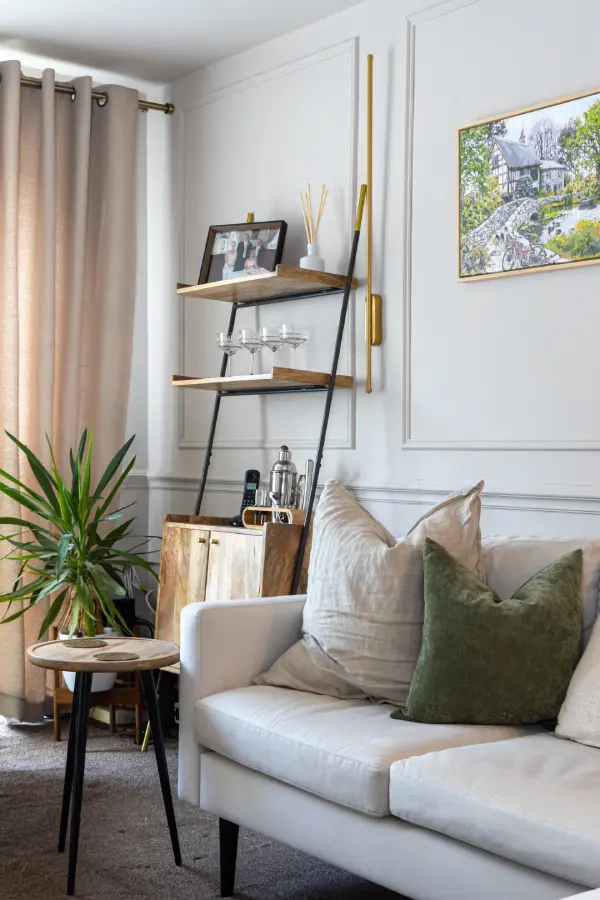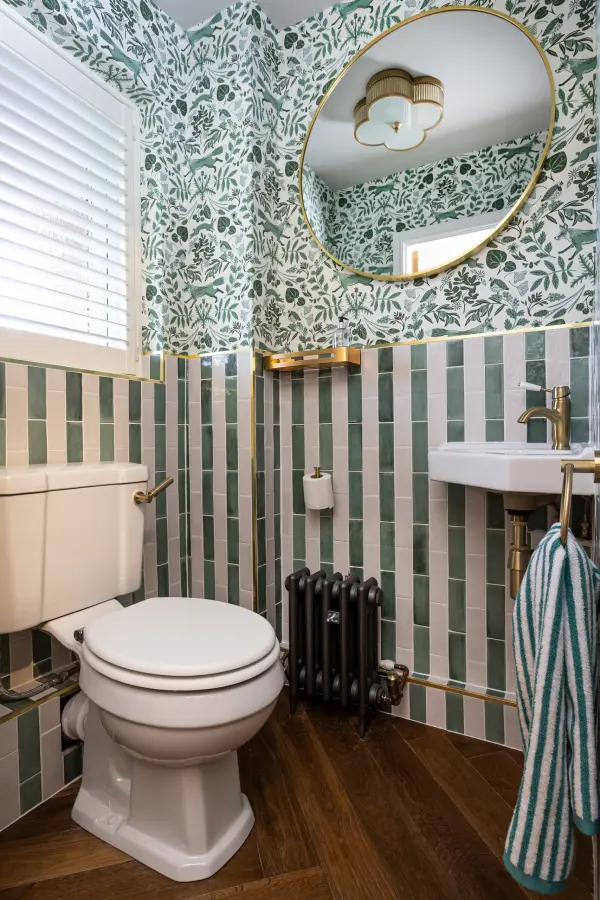6 Ways to add texture to your home for a more visually appealing space
- styleyoursanctuary
- Jun 29
- 4 min read
Are you ready to turn your space from boring to brilliant? The secret behind great interior design is adding texture to your space.

When you hear designers talk about “adding texture,” you might picture bold fabrics or tactile wallpapers (and you’d be right). But texture in interiors is more than just something you can touch. It’s a design element that brings depth, warmth, and a sense of completeness to a space. Whether you live in a minimalist flat or a characterful cottage, understanding texture can transform your home from flat to full of feeling.
What do designers mean when they say “texture”?
In simple terms, texture is how something feels, or looks like it would feel. It can be tactile (what you touch) or visual (what your eyes perceive). Interior designers use both to create interest, balance, and atmosphere.

Examples of textures to use in your home
Chunky wool throw
Velvet cushion
Glazed ceramics
Linen or velvet curtains
Rattan furnishings
Glossy worktops
Mirrors
These all bring different textures into a space. When layered thoughtfully, they add richness and personality, whether your palette is bold and colourful or soft and muted.
How to add texture to your home: 6 actionable ways
You don’t need to overhaul your interiors to bring in texture; start small, but think in layers. Here are some practical ideas to get you started, with examples of my design projects to inspire you!
1. It’s all about soft Furnishings
When it comes to adding texture in a space, soft furnishings are your best friend. From throws, cushions, rugs, and curtains, it’s all about layering! For example, add a chunky knit throw over crisp cotton bedding. Mix fine wool, sheepskin, slubby linen, or tufted cotton for subtle variety.
Check out this conservatory space I designed where I mixed different textures, from printed cushions and clashing prints (plaid and floral), to the tactile armchair that adds instant interest to the space (as well as being super cosy).

2. Utilise natural materials
Timber, rattan, wool, jute, stone, clay — these bring texture and connect your space to the natural world. In the Lake District, we’re surrounded by raw beauty, so why not bring a bit of that wildness inside?
For my own home, situated in the Lake District, I added a touch of nature to my living room with a live edge wooden coffee table. I love the wood-on-wood effect in this space as it gives it that warm, vibe and mixed with the woodland wallpaper, it ties in nicely.

3. Different ways to add texture to your walls
If you’re freshening up your walls with paint but want to create more texture, consider panelling, limewash, or wallpaper to bring a plain wall to life. A grasscloth wallpaper or a softly mottled paint effect can add gentle movement and warmth to walls. Check out the design below of a city apartment project I designed with panelled walls.

To create texture and depth in a bathroom, consider tile and wallpaper together for a visually interesting space that mixes texture. The shiny texture of the tiles combined with pattern can be a completely transformative look. Check out a toilet room I designed below which shows how to achieve a cohesive look using tiles and wallpaper.

4. Lighting plays a big part in creating texture
Lighting isn’t often considered textural, but it plays a big role, as it reflects off colour and can look different depending on which way your room faces and what type of light bulbs you use.
In this project I designed, there are lighting considerations that show you how to create texture. For example, the skylights draw in natural daylight, and you can see that when the light bounces off the crushed velvet chairs and the countertop at the breakfast bar. It transforms that space and instantly brightens it.
Furthermore, pendant and wall lights that I used in this space create an ambience during the evening. The layout of these lighting elements creates zones in the space for multiple social activities in one room, each with its considered ambience.

Additionally, adding wall lights above your sofa is a great way to make your space feel cozy during the evening and can create a warm glow on your walls and against colourful decor, like the example below in one of my recent projects.

5. Plants and flowers add a touch of nature
Nature does texture beautifully — from feathery ferns to glossy rubber plants or sculptural dried grasses. They also add life and movement, which can’t be underestimated.
In the living room below from a recent design project, I played with a floral theme and incorporated floral cushions and curtains and a statement bouquet to dress the window with a statement piece.

If you have an empty space in your room, consider adding a leafy plant that will fill up the space in a natural way, just like what I did in the design below between two chairs - it totally transformed the space!

Another example of filling up a space is this cozy living room I designed where the fireplace has been taken out. I inserted a rustic table with fluffy plants, down lit for a charming cottage look.

6. Vintage and Handcrafted Pieces
Nothing beats the soulfulness of age or handcraft. A battered leather chair, a hand-thrown mug, a carved wooden stool — these bring imperfections, stories, and beautifully irregular texture.
Conclusion
Thank you for reading my article and I hope you’ve learned some tips and tricks to implement in your own home. In this article, I’ve covered how texture is what makes a space feel lived-in, layered, and loved. It’s what stops a room feeling like a showroom and turns it into a sanctuary.

Now you’ve learned how to add this into your own home, start noticing how different surfaces interact in your room and ask yourself questions such as: “is there enough contrast? Enough softness? A mix of materials?”.
At Ben the Hoose Interiors, we believe texture is just as important as colour, especially if you want your home to reflect your personality and tell your story. So don’t be afraid to mix rough with smooth, matte with shiny, old with new. Texture is what brings everything together.
If you’re struggling to bring your ideas to life, let me help you!







Comments